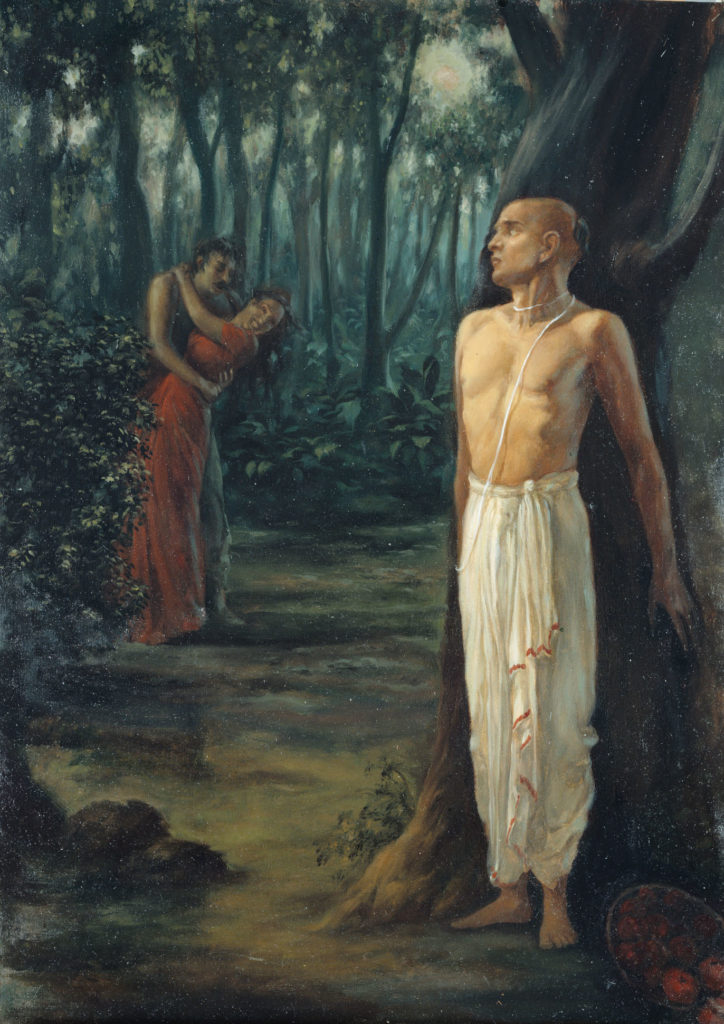One aspect of Vedic culture and classical Indian culture that many may find uncomfortable is the idea of early marriages. It’s mentioned in many passages that in Vedic culture girls would most of the time marry at a very early age. 16 years is mentioned as an ideal age (as Srila Prabhupada mentions in several passages), but in practice as soon as a girl would attain puberty the parents would start looking for a boy and would try to marry her as soon as possible.
Of course, this is an idea that sounds very strange to the modern mind. The idea nowadays is that ladies should marry later. When people hear about ladies marrying at an early age (especially to boys who are significantly older), images of exploitation and abuse come into mind. In fact, it’s quite common not only in India but also in other countries to hear stories of girls who are painfully exploited after being forced into marriages with older men.
However, if we study this topic from a historic perspective, we can see that these younger marriages were common in most societies up to one century ago. In Europe, most girls would marry not much after puberty, and most of the time to boys who would be significantly older. The same could be observed in most other societies, in Africa, Middle East, the East, and even in aboriginal societies. The idea of ladies marrying later is actually a recently new phenomenon.

When something is done in a similar way in so many places and for such a long time it’s usually a signal that there is some profound reason behind it.
The point comes down to a simple point. Young girls are interested in boys, and boys are interested in girls. This is a fundamental aspect of human behavior and it can’t be stopped very easily. The point is then how to properly regulate it. We come thus to the idea of marriage, where the idea of a boy having a girl comes together with the responsibility of properly maintaining her and the children. Marriage is another idea that can be found in practically all human societies.
Boys can usually be kept away from the girls at an early age if they are being properly educated. A boy can thus have time to grow up into a properly responsible adult before being allowed to marry. For the girls is actually more difficult. It’s very difficult for a young girl to grow up without knowing if she will be able to get married or not.
The solution found in Vedic society would be to train the boys at an early age, and allow them to marry only when they would become sufficiently responsible, and to marry the girls at a younger age, shortly after puberty, so they would not be forced to endure the anxiety of growing up without clear perspectives for the future. This system was abused in many instances throughout history, but we can say that it worked reasonably well over the centuries, even after the advent of Kali-Yuga. The girls would marry at an early age, but in most cases, the relationship would happen under the supervision of the parents until the couple would be mature enough to live on their own.
As I mentioned, this was being done in most societies throughout the centuries. Up to the fifties and sixties, girls would marry relatively early, usually with their first boyfriend. Not many girls would accept having sex with a boy without a serious commitment to marriage.
The modern society brought the so-called sexual revolution. Thanks to the availability of contraceptives and abortions, boys and girls suddenly became free to freely associate without fear of pregnancy. Thanks to that, marriage and sex became disassociated. Girls grow up meeting many boys and having multiple sexual partners, and only much later settle in family life. Girls are having sex earlier than ever, it’s now not uncommon to hear about girls having sexual relationships as early as 11 or 12 years of age.
We can see that the same propensity of girls getting involved with boys at an early age is still present. Girls are having relationships with boys at an early age, they are having sex at an early age and in many cases becoming pregnant at an early age. They are also getting involved with older boys, and in many instances being mistreated by them. The only difference is that now instead of doing it inside the protection of marriage, under the supervision of the parents, they do it without any type of supervision or protection. If we examine the situation calmly, we can see that this is actually the only difference.
In any situation where boys and girls are not allowed to associate without being married, they start, by mutual agreement, getting married quite early, simply due to the need for relationships. With a good education, this can be postponed up to the point where boys and girls are properly educated, which is probably the most ideal situation. Late marriages, however, become possible only when boys and girls are allowed to freely associate outside marriage.
If we see things from this perspective, the older practice of early marriages doesn’t look so bad, as long as the proper checks and balances are present. I would dare to say that if the parents are responsible, the boys are properly trained, and the girls are properly educated, it is actually a better system than what we have today.
